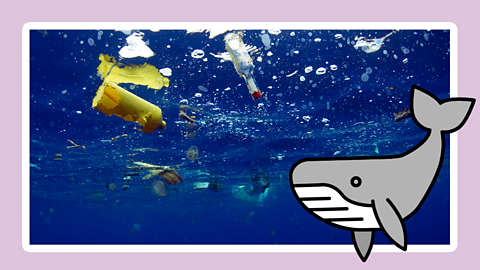The Prince of Wales’ annual environmental innovation awards are set to announce the latest winners of £1 million in funding.
The third annual Earthshot Prize – founded by Prince William - takes place in Singapore on 7 November.
The awards celebrate the most innovative solutions to the world’s environmental challenges and are named in honour of former US President John F Kennedy’s 1962 Moonshot plan - which aimed to place a man upon the moon within a decade.
The Earthshot Prize has set a similar 10-year target to reward environmental projects in five key areas – protecting and restoring nature, cleaning our air, reviving our oceans, building a waste-free world and fixing our climate.
Ahead of the 2023 winners being revealed, ¥ÛœÛ¥´√Ω Bitesize spoke to winners and finalists from 2022 about what the Earthshot Prize meant to them.
Mukuru Clean Stoves - Kenya
Founded by Charlot Magayi in Western Kenya, Mukuru Clean Stoves produce stoves fired by processed biomass made from charcoal, wood and sugarcane, instead of solid fuels – which cause air pollution and accidents that claim four million lives a year.
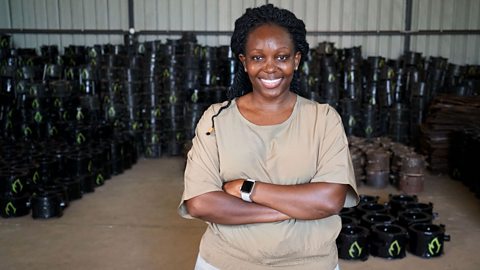 Image source, The Earthshot Prize
Image source, The Earthshot PrizeCharlot told us about the impact of winning the 2022 Clean Our Air prize.
“Previously, people used open fires and inefficient stoves, which would burn a lot of fuel quickly and produced toxic smoke. Ours has a raised carbon efficiency, so the fuel burns for a little bit longer and reduces the amount of toxic smoke that is emitted.
“We're based in Western Kenya, but I'm planning to scale out. We’ve always had good feedback for our stoves, but for a long time, we struggled to reach that many people. But now we’re doing that with help from the Earthshot Prize and their partners.
“It was so shocking even becoming a finalist, let along winning, but very validating, because we knew we had a product that was working very well, saving lives and increasing household income.
 Image source, The Earthshot Prize
Image source, The Earthshot Prize“We want to protect the environment as well as the health of our local communities. We’re planning to move the stoves into Western Africa and think that by 2030, we would have impacted more than 10 million lives across the world.
"Young people are creating solutions, they're advocating for us to protect our environment and I encourage them to keep doing that and coming up with fresh ideas. It can be as simple as making a decision on what you're going to be consuming but if you have ideas, be audacious enough to try and see if they help."
The Great Bubble Barrier - Netherlands
Plastic waste in waters around the world is a major environmental hazard. It decomposes slowly in the sea, and as it breaks down into small particles, can be incredibly damaging to sea life.
The Great Bubble Barrier in Amsterdam, Netherlands – a finalist in the 2022 Revive our Oceans category - looked to tackle this in a way that protects fish, as co-founder Francis Zoet explains.
“We send air through a perforated tube at the bottom of the waterway. It creates a bubble curtain which guides plastic to a catchment system so it can be removed. Ships can travel through it, as well as fish, and it doesn’t hinder the rest of the river system.
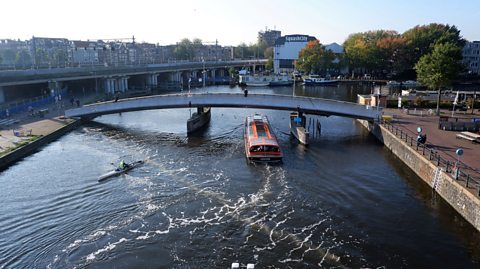 Image source, The Great Bubble Barrier
Image source, The Great Bubble Barrier“The barrier captures around 86% of floating materials and around 50% of submerged plastics. Our first system was in Amsterdam - the city really wanted to do something about plastic because when it leaves Amsterdam, it goes straight into the North Sea. The barrier has been really successful, but of course, there are a lot of different other cities where we have the same kind of issues.
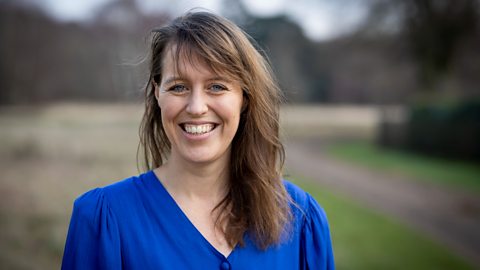 Image source, The Great Bubble Barrier
Image source, The Great Bubble Barrier“It was amazing to be nominated, we felt super honoured. It’s also helped us connect to the other finalists and learn from each other. Our ambition has always been to make more impact outside the Netherlands and our first system in Europe is coming up right now in Portugal. The next step is our first system within South East Asia, because in terms of plastic, that’s the main source. We think our technology is ready for that step.
"There's still so much to do for the environment, it can be a lot to take in. But we've also seen that there is so much potential. If you have a really good idea, there are so many people who can help you get it out there, so find people who can support you."
Kheyti - India
In India, climate change has particularly affected small-hold farming – farms on small sites. Kheyti – the 2022 Protect and Restore Nature winner – was set up to provide these small-hold farmers with low-cost greenhouses to protect their crops, as co-founder Kaushik Kappagantulu explains.
“I visited thousands of villages across India, speaking to farmers. They talked about how it wasn’t their hard work that decided whether they succeeded or failed, it was the heat, rain or pests and things were getting worse every year.
 Image source, Kheyti
Image source, Kheyti“Our mission is to increase incomes for small hold farmers, through low-cost greenhouses. Our greenhouses are made of a steel structure and plastic covering materials, and they’re designed to last for about 15 years. We’re looking into how we recycle or upcycle them after that too.
“We’ve scaled up a lot in the past 18 months. We now work with 3,000 farmers across India and we want to reach 100,000 farmers in the next five years, and a million in the next decade.
“It's been an amazing year since we won the Earthshot Prize. The prize brings some recognition, some funding but also a platform to multiply our impact by creating partnerships. We’re using that funding to invest in innovation and research.
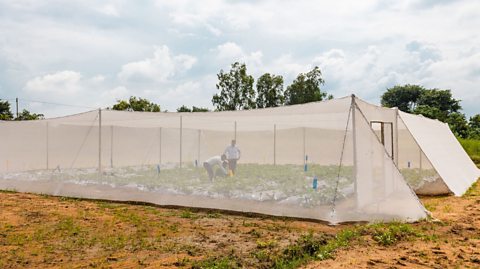 Image source, Kheyti
Image source, Kheyti“There are lots of people who care about this problem, but we can’t solve it alone. We need billions of people to care about it. When I was a teenager, I didn’t care about climate change, but now it’s young people who care. It makes me hopeful for the future that we can solve these problems.”
You can watch the 2023 Earthshot Prize ceremony on ¥ÛœÛ¥´√Ω One and ¥ÛœÛ¥´√Ω iPlayer on 12 November at 5.20pm
This article was published in October 2023
What is the problem with plastic?
GREEN CLASSROOM
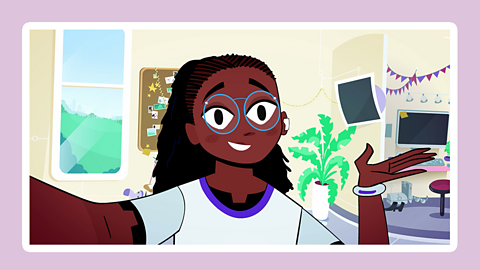
Green Themes Explained
Videos to help explain the conversation and language used around climate change and the environment.

